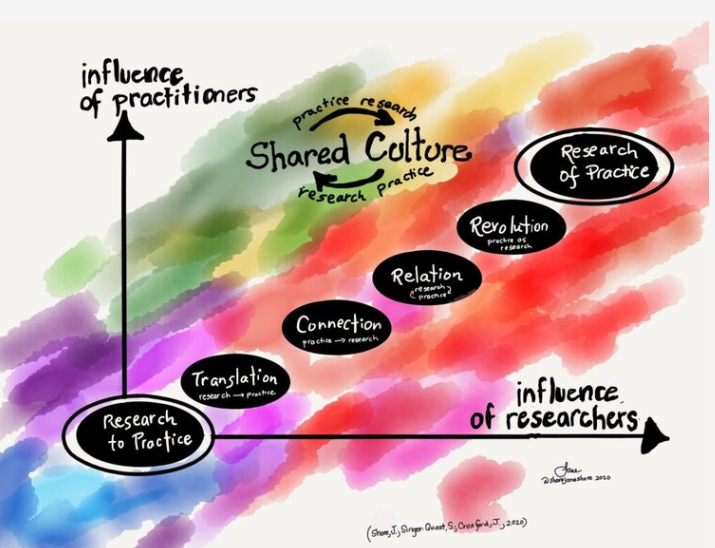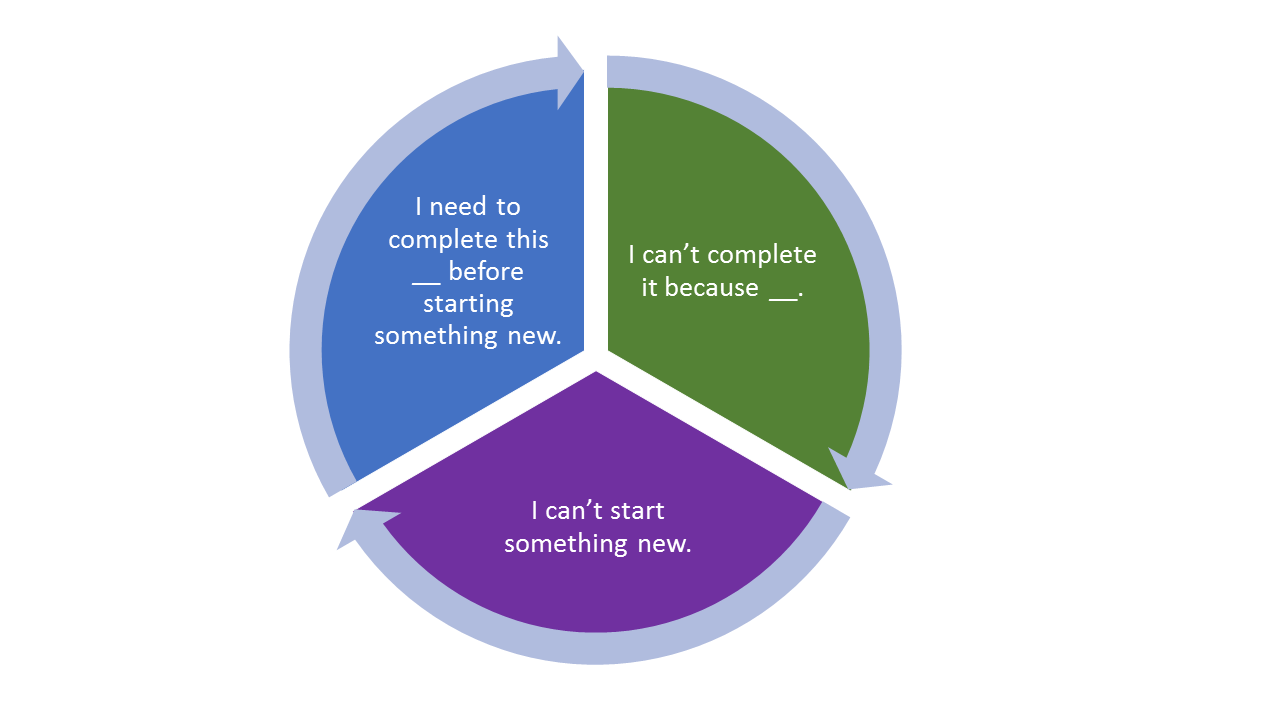Use Research Cases to Teach Methods for Large-Scale Data Analysis
by Janet Salmons, PhD Research Community Manager for Sage Methodspace
Dr. Salmons is the author of Doing Qualitative Research Online, which focuses on ethical research and writing, and What Kind of Researcher Are You? which focuses on researcher integrity. Use the code MSPACEQ423 for a 20% discount, valid until December 31, 2023.
Active Learning Helps Students Develop Research Skills!
Unlike journal articles, research cases describe decision-making, and in-the-moment course corrections when the pristine research design encounters the muddy real world. They provide an excellent basis for active learning for individual students or team projects. The ten-step process outlined below offers students the opportunity to dig deeply into the case, then to research and evaluate alternative options.
This SRM case is available open access through June 2024:
LaPlume, A., (2022). Challenges and solutions for data analysis in an adult lifespan study of over 100,000 online cognitive test completions. In Sage Research Methods: Doing Research Online. SAGE Publications, Ltd.
Abstract: In this case study, I describe methodological insights from data analysis of an online adult lifespan dataset (over 100,000 completions, ages 15–100). The data were used to study cross-sectional age differences in cognitive performance. I cover the steps of data analysis for large-scale web-based data, namely data cleaning, analysis, and visualization techniques. In each step, I describe the unique challenges that face analysis of data collected online, and potential solutions to address them, by drawing on practical lessons and examples from this study.
A Ten-Step Process for Teaching and Learning with Research Cases
LaPlume brings big data analysis to life, giving us an inside look at the practices used and lessons learned. We can benefit from these lessons, whether or not we are interested in the topic of this particular study. Use all ten steps for a series of activities, select the ones that fit your course or seminar, or adapt to use for your own skills development.
1. Understand the research approach.
The case study focuses on the analytic stage of research. The author used quantitative data analysis of an online dataset with statistical modelling. The case study walks through steps for data cleaning and visualization. To understand the case, you will need to be familiar with key terms and concepts. Look for research handbooks or dictionaries, or the glossaries in research texts to learn more about terms new to you.
Can you briefly define these terms?
Statistical modelling
Data cleaning
Data visualization
Non-Linear Regression
Model comparison and selection
Data resampling
Covariates
Cross-sectional differences
2. State the methodological problem(s).
Study the challenges the author described about using and analyzing large-scale online data.
What specific methodological problems are stated in the case? How did she differentiate between strategies for small or large datasets? Can you identify additional challenges the author did not mention?
Sage Research Methods (SRM) includes an extensive, multi-disciplinary collection of cases that illustrate how quantitative, qualitative, and mixed methods social science studies are conducted. Learn more about teaching with cases here.
Sage Research Methods is a subscription-based library database. If you don't have access to a library with SAGE Research Methods, sign up for a free trial.
3. Explain how the case author addresses the problem(s).
Summarize the strategies used to address the methodological challenges associated with analyzing large collections of data.
4. Identify unanswered questions.
Building on your understanding of the case, what strategies for large-scale data analysis are missing? What methodological questions are unanswered? What information is incomplete or inadequate?
5. Broaden the inquiry; research the problem and unanswered questions.
Select one or more of the unanswered questions you identified to pursue further. Find credible sources or examples to fill in the knowledge or information gaps in this case.
6. Offer alternative solutions and methodological approaches to the problem.
Find at least one case or article that covers analysis of large datasets. Based on your research, what are other options this author could take to analyze and/or visualize this large set of online data? Provide examples from other studies as relevant. Cite your sources.
7. Evaluate each alternative.
Weigh the advantages and disadvantages of the potential approaches you suggested in response to question 6.
8. Offer your best recommendation.
State your recommendation for the best alternative given the circumstances, obstacles, and factors described in the case.
9. Describe implementation.
How would you carry out the analytic process you suggested in response to question 8? What tools, team members, or other resources will you need to implement this approach?
10. Finalize the case analysis.
Complete the paper, presentation, or team project as assigned.
More Methodspace Posts about Teaching Research Methods
Listen to this interview, and check out Rhys Jones’ latest book: Statistical Literacy: A Beginner's Guide.
This blog is the seventh, and penultimate post, in a follow-on to our 2021 “The future of computational social science is Black” series, about a Summer Institute in Computational Social Science organized by Howard University and Mathematica. It continues to bring the power of computational social science to the issues of systemic racism and inequality in America. This marks the third iteration of the successful SICSS model being hosted by a Historically Black College or University.
This blog post is the sixth of eight in a follow-on to our 2021 “The future of computational social science is Black” series, about a Summer Institute in Computational Social Science organized by Howard University and Mathematica. It continues to bring the power of computational social science to the issues of systemic racism and inequality in America. This marks the third iteration of the successful SICSS model being hosted by a Historically Black College or University.
Latanya Sweeney, scholar of technology science, Daniel Paul Professor of the Practice of Government and Technology at the Harvard Kennedy School and in the Harvard Faculty of Arts and Sciences, and director and founder of the Public Interest Tech Lab, delivered the keynote address for SICSS-Howard/Mathematica 2023.
This blog post is the fifth of eight in a follow-on to our 2021 “The future of computational social science is Black” series, about a Summer Institute in Computational Social Science organized by Howard University and Mathematica. It continues to bring the power of computational social science to the issues of systemic racism and inequality in America. This marks the third iteration of the successful SICSS model being hosted by a Historically Black College or University.
This blog post is the fourth of eight in a follow-on to our 2021 “The future of computational social science is Black” series, about a Summer Institute in Computational Social Science organized by Howard University and Mathematica. It continues to bring the power of computational social science to the issues of systemic racism and inequality in America. This marks the third iteration of the successful SICSS model being hosted by a Historically Black College or University.
This blog post is the third of eight in a follow-on to our 2021 “The future of computational social science is Black” series, about a Summer Institute in Computational Social Science organized by Howard University and Mathematica. It continues to bring the power of computational social science to the issues of systemic racism and inequality in America. This marks the third iteration of the successful SICSS model being hosted by a Historically Black College or University.
This blog post is the second of eight in a follow-on to our 2021 “The future of computational social science is Black” series, about a Summer Institute in Computational Social Science organized by Howard University and Mathematica. It continues to bring the power of computational social science to the issues of systemic racism and inequality in America. This marks the third iteration of the successful SICSS model being hosted by a Historically Black College or University.
This blog post is the first of eight in a follow-on to our “The future of computational social science is Black” series, about a Summer Institute in Computational Social Science organized by Howard University and Mathematica. It continues to bring the power of computational social science to the issues of systemic racism and inequality in America. This marks the third iteration of the successful SICSS model being hosted by a Historically Black College or University.
Julianne Cheek and Elise Øby, co-authors of the book Research Design: Why Thinking About Design Matters, discuss how to make decisions about what qualitative, quantitative, or mixed methods data to collect and how to do so. This post is the third of a three-part series of posts that feature ten author interviews.
Anna CohenMiller helps us drawing on the 4C's of research: Compassion, Community, Care and Collaboration into our research praxis to develop as individuals and researchers.
Doctoral student Sandra Flores discusses her research in Puerto Rico, and what she learned from the experience.
Sage Research Methods Community posts about mentors and mentoring
Julianne Cheek and Elise Øby, co-authors of the book Research Design: Why Thinking About Design Matters, discuss how to make decisions about methodology in this collection of video interviews. This post is the second of a three-part series of posts that feature ten author interviews.
“Learning about networks, therefore, is to learn key intellectual and empirical skills for navigating through complexity – this descriptor that permeates the world of the 21st century.” Learn more in this guest post from Ion Georgiou.
In this guest post Jane Shore and Sarah Singer Quast remind us of the importance of bridging research and practice, and give specific recommendations.
How can you use data science in social science research? Find an interview with the Oxford Internet Institute’s Dr. Bernie Hogan and lots of useful resources in this post.
We need to think about research before we design and conduct it.
Julianne Cheek and Elise Øby, co-authors of the book Research Design: Why Thinking About Design Matters, discuss the first three chapters in these video interviews:
Chapter 1 – Research Design: What You Need to Think About and Why
Chapter 2 – Ethical Issues in Research Design
Chapter 3 – Developing Your Research Questions
The editor of The Sage Handbook of Online Higher Education, Safary Wa-Mbaleka, is joined by contributors in a lively roundtable about teaching and learning online.
This year we need to honor Martin Luther King's legacy with both reflection and action! In this post, find links to lots of original source materials, including documents and recordings.
Look candidly at your unfinished project. Is it a stepping stone, and completion will be allow you to move ahead? Or is it an obstacle that prevents you from moving forward? Find ideas to help you determine whether to revive that piece of writing or let it go.
Have a writing project that is languishing? Find practical tips for keeping it alive!
Methods Film Fest!
We can read what they write, but what do researchers say? What are they thinking about, what are they exploring, what insights do they share about methodologies, methods, and approaches? In 2023 Methodspace produced 32 videos, and you can find them all in this post!
How can we teach and learn research methods and academic writing skills using videos? Find 6 ways to use videos with students or to delve more deeply and build your own skills. Make sure to check out Methodspace videos freely available on YouTube.
Many questions were posed by attendees of the Sage webinar, Create a Research Agenda and Personal Academic Brand, with panelists Dr. Mark Carrigan and Dr. Jessica Sowa. Attendees posed many questions. This post is the first in a series - find responses to your questions and links to related resources.
Jessica Lester and Trena Paulus co-edited a December 2023 special issue for the Sage journal, Qualitative Inquiry, “Qualitative inquiry in the 20/20s: Exploring methodological consequences of digital research workflows.” Read the articles and watch a roundtable with contributors. This is the second of two discussions of the special issue.
Jessica Lester and Trena Paulus co-edited a December 2023 special issue for the Sage journal, Qualitative Inquiry, “Qualitative inquiry in the 20/20s: Exploring methodological consequences of digital research workflows.” Read the articles and watch a roundtable with contributors. This is the first of two discussions of the special issue.
Thinking about research careers and calling: finding the right fit.
Use research cases as the basis for individual or team activities that build skills.
Safary Wa-Mbaleka, Arceli Rosario, and Anna Cohen Miller discussed opportunities and challenges for global researchers and academic writers in this roundtable discussion.
























This blog post is the eighth, and final, post in a follow-on to our 2021 “The future of computational social science is Black” series, about a Summer Institute in Computational Social Science organized by Howard University and Mathematica. It continues to bring the power of computational social science to the issues of systemic racism and inequality in America. This marks the third iteration of the successful SICSS model being hosted by a Historically Black College or University.